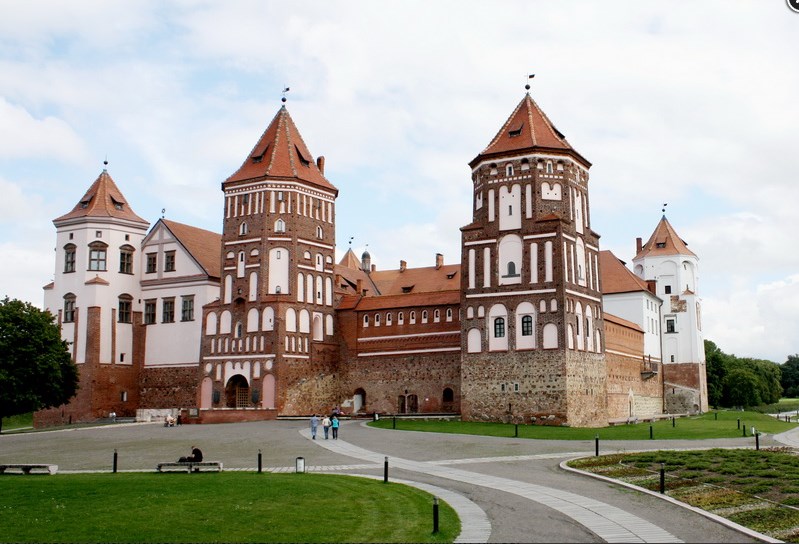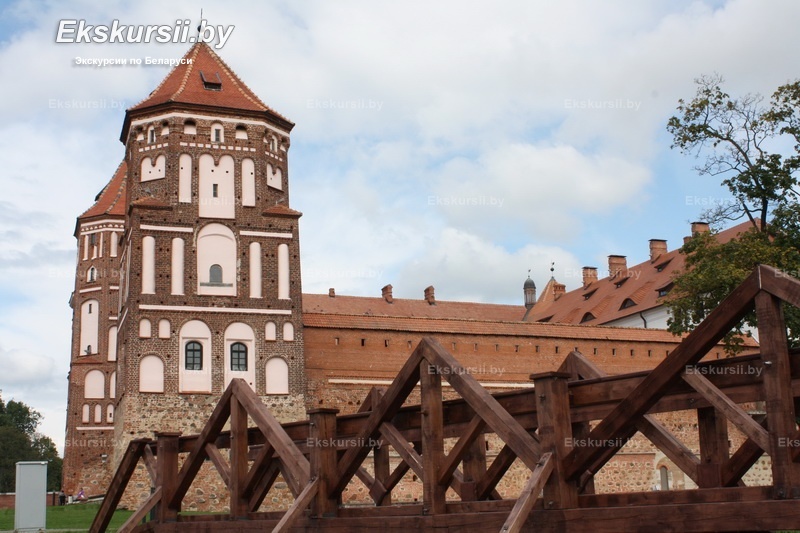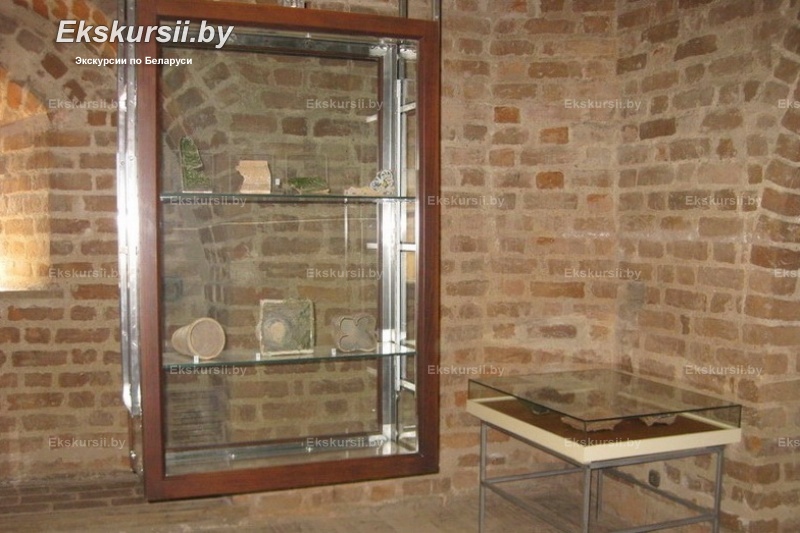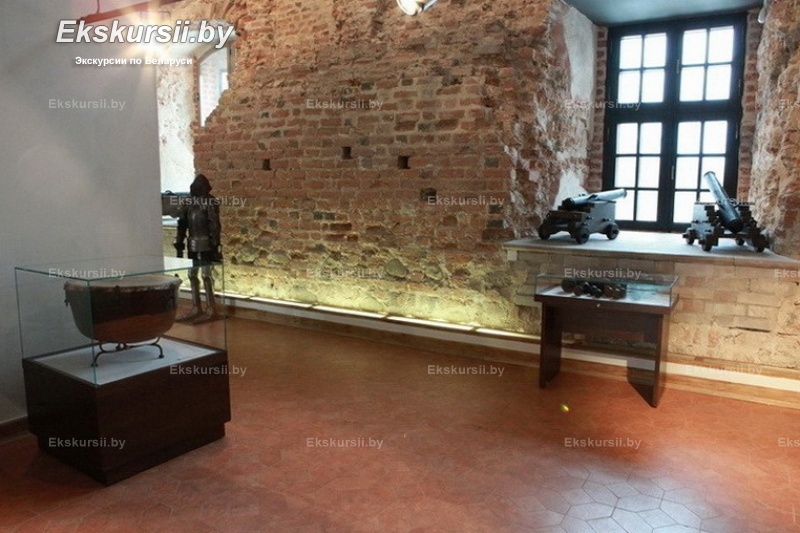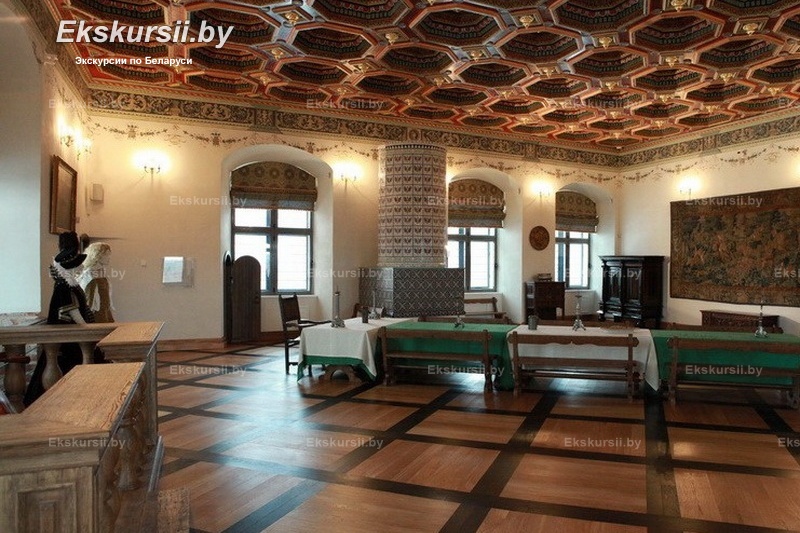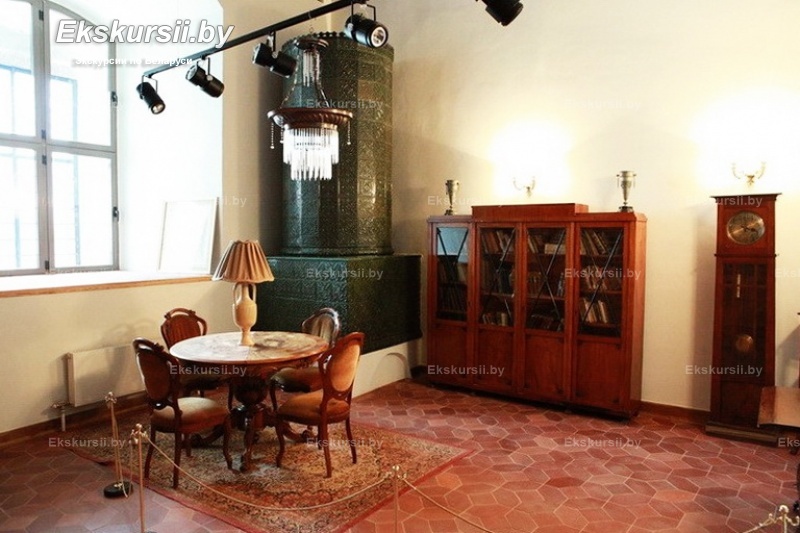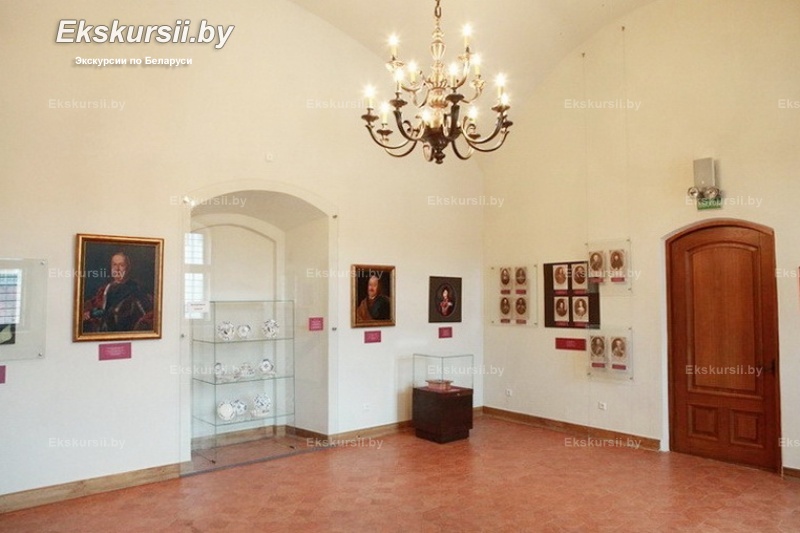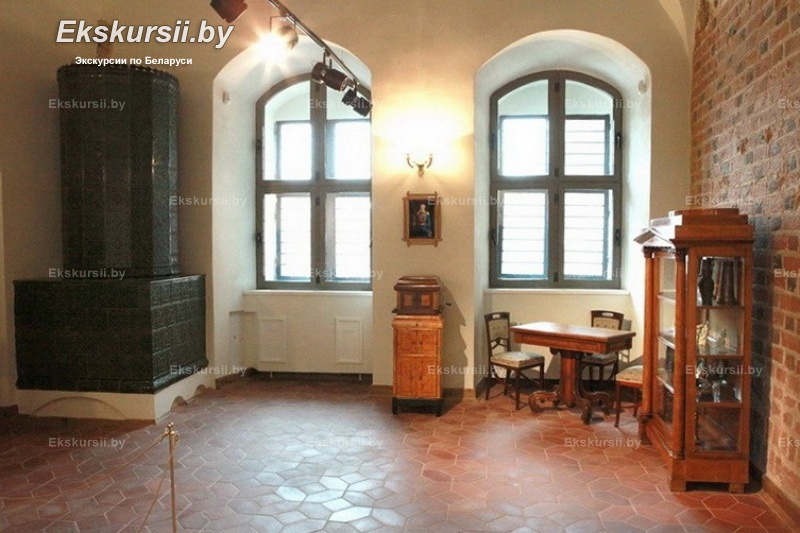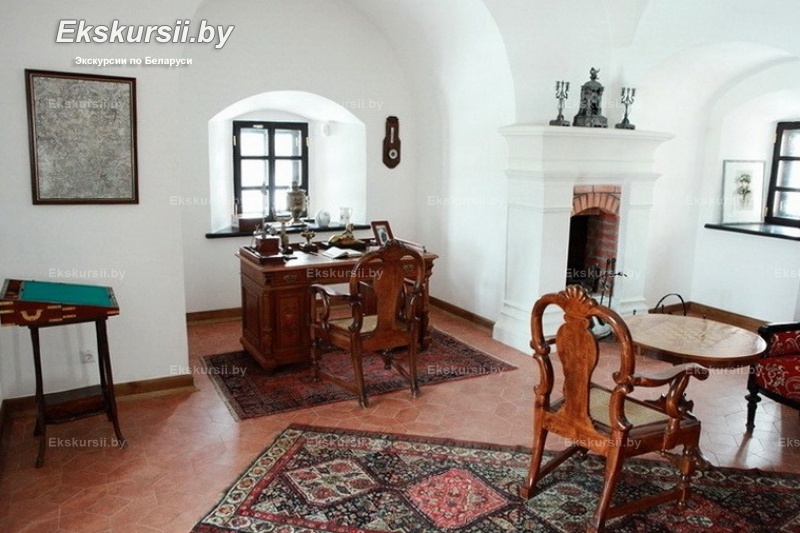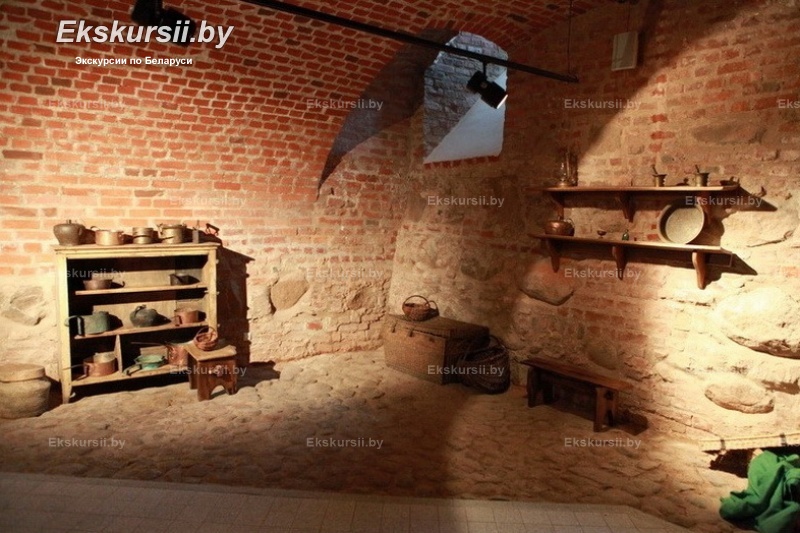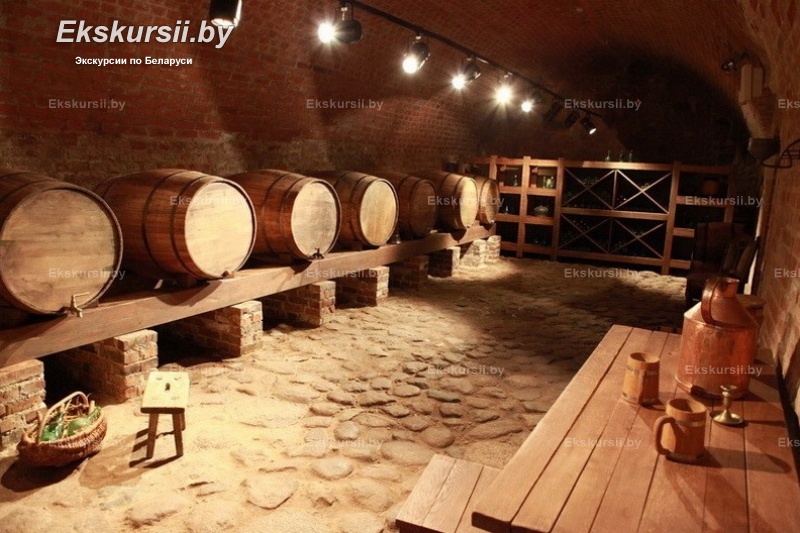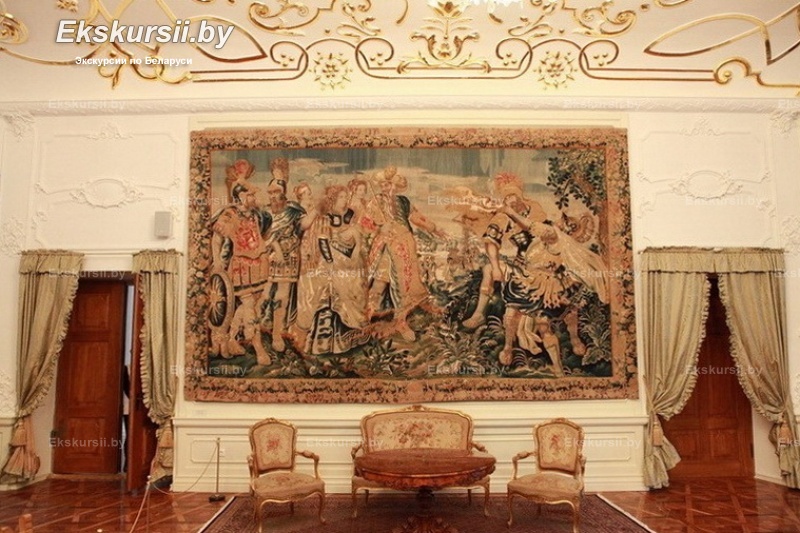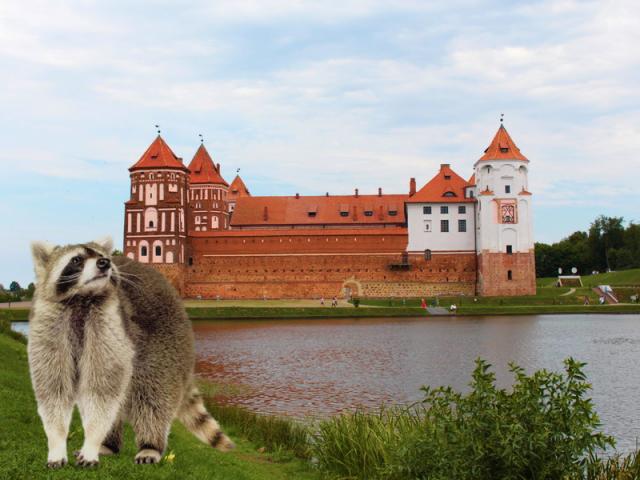Mir Castle Complex
museums
Description
Mir Castle Complex XVI-XX centuries. in Mir - a monument of historical and cultural value of national significance and world cultural heritage by UNESCO. First mentioned in the settlement of Mir in 1395 "Chronicle Lindenblata».
Mir Castle was built in the XVI century, has experienced a number of historical eras, saturated by political, economic and cultural events and is example of castle architecture Belarus XV-XX centuries. In 1987, the castle became a branch of the National Art Museum of Belorussian SSR (since 1993 - the National Art Museum of Belarus). In 1988, the government passed a Decret BSSR "On the status of Mir castle as a historical and cultural value of national importance. " In 1989, approved a new project to restore the castle, in which the capacity for museum display. In 1991, a restoration project of the MirCastle and its progress expertise approved by UNESCO. In October 1992, the museum exhibition is open to the south-west tower.
In December 2000, the castle complex "Mir" is included in the list of world cultural heritage by UNESCO as an outstanding example of a central European castle, which reflects the gradual change of cultural styles (Gothic, Renaissance, Baroque). In form and appearance of the ensemble reflects a long history of political and cultural confrontations and interactions. Since 2006 began active restoration of the castle. In March 2008 the Ministry of Culture approved the "scientific concept museification Castle complex "Mir". In april 2011 - Mir Castle received the status of an independent museum. Currently castle complex "Mir" is a historical and cultural monument, cultural-educational and educational-cultural institution. At the same time it carries out research and publishing activities, provides a range of fee-based services. The architectural complex includes a lock XVI-XX centuries, earthworks XVI-XVII centuries, the landscape and the formal garden, an artificial lake, outbuilding, a chapel, the tomb of princes Svyatopolk-Mirsky with a house and a caretaker's gate, a roadside chapel on an area of about 25 hectares. Display area halls of the museum is 2806 6 m2. Operates 38 permanent exhibitions. The total number of museum objects - 2215 of them are general fund - 337, auxiliary science - 1878.
he castle has two conference rooms for events at a high level, a hotel with 15 rooms, a restaurant serving cuisine antique, gift shop with products of Belarusian artists.
On concert stages Castle complex is traditionally held music and jousting festivals, arts festivals and crafts, lectures, museum studies, museum holidays.
Traditional arts festivals: "Mir Castle" - the festival sound ancient works, spiritual writings and pop
Music. Director of the festival - People's Artist of Belarus, Professor M. Finberg
"Musical evenings in the Mir Castle" - concerts of artists of Belarus. International festival of the Middle Ages "Heritage of the ages" - one of the largest in the country and in Eastern Europe, the historical reconstruction of events.>
Exposure
”Armament” collection consists of 9 pieces: weapons, war materials XVI-XIX centuries.
”Аrcheology” Collection includes 35 exhibits, stove tiles, their elements XVI-XVIII centuries.
”Arts and crafts” the collection includes 28 exhibits: interior decoration items handmade, their elements XII-XX centuries.
”Numismatics” collection consists of 59 pieces: coins XV-XVII centuries.
”Household items” collection consists of 97 pieces: kitchen utensils, personal items XVII-XX centuries.
”Interior items” collection consists of 85 pieces: furniture, mirrors, chandeliers, clocks, etc. XVI-XX centuries.
Portrait hall reconstruction of the interior of 1740-1750's. Images of the castle's owners reflect the history of the family "in the people," testified about the antiquity of the Radziwill family, his knightly and military glory, participation in nation-building, emphasize high aristocratic dignity magnates.
Dining room the main ceremonial room of the palace of the Renaissance. Hall was renovated for the period end XVI - XVII in the middle. Dining hut is central to the planning of the palace and has a considerable size, the presence of a large tiled stove with official symbols, overhead lighting (chandelier).
Library prince Michael Sviatopolk-Mirsky exposure to the library renovated the interior of the castle 1930. The library is not only the books of several generations of ancestors, but the family archives, old prints and maps, current magazines and newspapers. There is only one documentary source - Photo 1930, which Prince M. Sviatopolk-Mirsky shown reading a round table with a lamp.
Cabinet owner of the castle of Prince Mikhail Nikolaevich Sviatopolk-Mirsky office building located in the East of the castle. The decor is known according to the memoirs of contemporaries and several photos.
Parlor princes Svyatopolk-Mirsky interiors, known by the images projected Warsaw Conservatory Theodore Bursch. Preserved interior photos of rooms in the castle Sviatopolk-Mirsky. Rooms striking simplicity and modesty - Prince wanted to preserve the atmosphere of the ancient castle, and at the same time have the novelties of the twentieth century - electricity, boiler room telephone.
Life by candlelight. The material culture of the Grand Duchy of Lithuania exposure describes magnate lifestyle warrior nobleman of the Grand Duchy of Lithuania, the slave medieval aristocratic caste norms of ethics and ideals of chivalry.
The first owners of the World - Ilinichy exposure is devoted to a noble family Ilyinich and historical events related to the construction of the castle in the world.
The owners of the castle - Radziwill еxposure devoted Radziwills and describes historical events pertaining to the castle.
Owners Mir Castle - Witgenstein exposure reveals the historical events related to marriage of Emperor Ludwig Wittgenstein with Stephanie - the successor branch "Nesvizh" Radziwill.
Inner porch combine the remaining part of the building with access and separate the living area from the front of the palace. These could be used for recreation servants arrived guests. The design and furnishings were simple. Near the stove, or benches were placed along the walls and chests.
Hunting in the Grand Duchy of Lithuania exhibition shows the hunt as one of the most important forms of social life moguls gives an idea of the exquisite things to do rich people (competition in power, accuracy, stamina).
Battle of the Mir 10-11 June 1792 exposure dedicated to the events associated with the section in August 1772 between Austria, Prussia, Russia and the Commonwealth, take 3 May 1791 the first European Constitution. Showing resistance gentry Russian troops and the patriotic sentiments of the gentry.
Ghetto in Mir Castle еxposure opened in January 27th 2011. It was prepared by the combined efforts of the staff of the National Art Museum of Belarus, a branch of "Castle Complex" Mir "with the participation of the Museum of Jewish History and Culture. The exhibition benefited from the funds of the Brest Regional Archives and the State Museum of the Great Patriotic War. Part of the exhibition is located in the underground fortifications. In memory of the dead prisoners lit candle, sounds Jewish prayer. It contains the book with the names of Holocaust victims.
Cellar for storage of beer renovated space in the cave for a period of XVII-XVIII centuries. Here for reliable locks are stored alcoholic beverages princely table. Rows along the walls on a special platform are heavy wooden barrels.
Architectural and archeological researches of the Mir Castle includes documents, photos, diagrams, drawings, engravings reflecting the appearance of the castle in different historical periods, its architectural features. There are exhibits devoted to the study of the cultural layer of the castle.
Refectory listed in the inventory of the Mir Castle in 1688 as "cottage kitchen white stone." Was the title of a dining room for those who worked in the castle. Here to the ball, a banquet or hunt attracts many visitors with their servants. The room was reconstructed in the XVII - XVIII centuries.
Pantry, weight room room was reconstructed in the XVII - XVIII centuries. During the turmoil of war here were procured food supplies.
Household appliances renovated premises for food processing and intended for household needs.
The decoration of stoves and fireplaces XVI - early XX centuries. tiled stoves are widely used in the castles of the first decades of the XVI century. In the end of XVI - early XVII century. Prince Radziwill castle being finished: erect a three-storey palace and various economic and business premises.
Historiographical and archeological researches of the Mir Castle exhibition dedicated to the historiographical descriptions of the castle (from XVI-XVII centuries), archeological research. Here are the vessels, eaves wall tiles, pipe for smoking XVI-XVII centuries. etc.
Armoury shows the collection of military clothing and accessories defensive period of the Grand Duchy of Lithuania from the XV to XVIII centuries. On display are copies of ancient chain mail, armor, and their details.
Tiles of Grodno region the most ancient type of Mir tile found in the archaeological layer in the settlement XV century, which existed on the site of the castle was destroyed by a huge fire at the turn of the XV-XVI centuries. Tile is formed on the potter's wheel of a clay mass and the shape of a cylinder ("pot" tile).
Building materials Mir Castle еxposure is located in the original interior (except for paving floor and stairs, recreated on the examples of the early twentieth century). basements beginning of the XVI century. (up to 1568). Presented racks with clay, fragments of masonry walls of the castle.
Working hours
Administration 09.00 - 18.00 without days off
Cash 10:00 - 17.20 without days off
Exposure 10.00 - 17.20 without days off
On the map
Address
231444, Republic of Belarus, Grodno region, Korelichi district, Mir, Red Army str., 2
Coordinates
